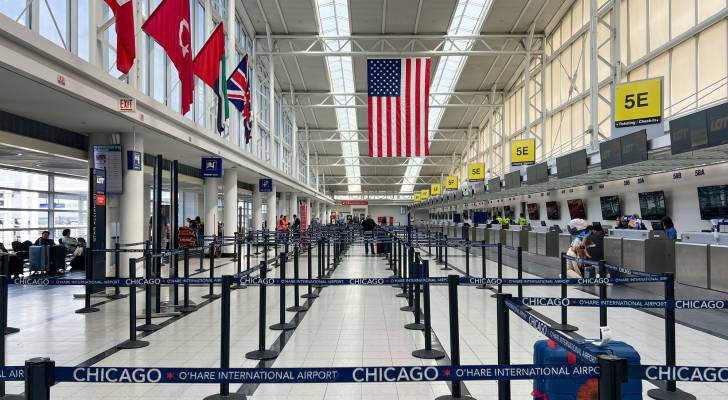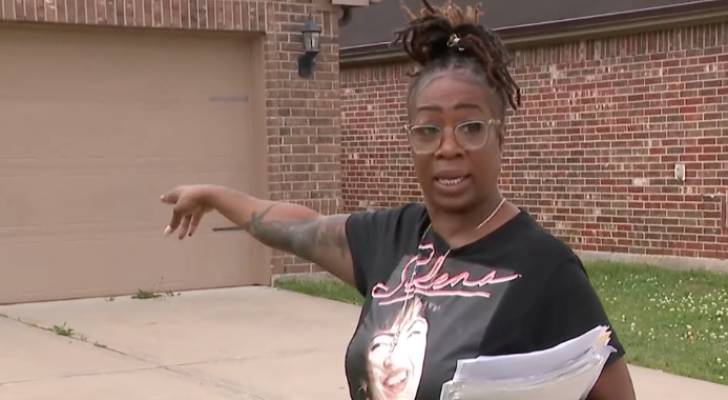Bernie Sanders calls White House allegations of Social Security fraud and waste ‘a prelude not only to cutting benefits, but to privatizing.’ How outsourced Social Security might work


Could misinformation about Social Security be paving the way for privatization? That’s how Bernie Sanders sees it. Sen. Bernie Sanders of Vermont told CNN that lying about Social Security “is a prelude not only to cutting benefits, but to privatizing Social Security itself.” By making the system appear dysfunctional, then “why would anybody want to […]
Trump wants to ‘abolish’ the IRS and replace federal income tax revenue with tariffs on imports — how would such a move affect middle-class Americans?


U.S. President Donald Trump plans to replace income taxes with tariffs, but what does that mean for the average middle-class American? Don’t miss I’m 49 years old and have nothing saved for retirement — what should I do? Don’t panic. Here are 5 of the easiest ways you can catch up (and fast) Gain potential […]
In the market for a new condo? Developers are bracing for construction costs to surge — as high as 20% because of Trump’s tariffs. Here are 3 moves homebuyers can make to protect themselves


Construction costs started surging in anticipation of tariffs — and they could get worse with a baseline 10% tariff now in place on imported goods from most countries, not ot mention a sky-high tariff of 145% on most Chinese goods. That all translates into higher costs for new condos and homes, even after the Trump […]
Can buying in bulk cost you more? Why Americans desperate for savings should be wary of warehouse clubs like Costco


With prices rising, consumers are increasingly looking for ways to save money. And one way to do that is through warehouse club retail stores, like Sam’s Club, Costco and BJ’s Wholesale Club. But is membership all it’s cracked up to be? Shopper Britney Downing tells KHOU-11 that she saves on cereal for her five kids. […]
Is $1.5 million the ‘magic number’ for retirement savings in the US? Here are the top 4 best and worst states for making it last


Americans now believe they’ll need more money to retire comfortably than they did even a few years ago. The “magic number” for retirement savings has grown by more than 50% since 2020 to roughly $1.5 million, according to Northwestern Mutual’s Planning & Progress Study 2024. Don’t miss I’m 49 years old and have nothing saved […]
San Diego bans grocery stores from offering digital-only coupons, arguing seniors and low-income families end up paying more


San Diego has banned grocery stores from offering only digital coupons after the San Diego City Council voted unanimously in favor of the Grocery Pricing Transparency Ordinance. It’s just one move by states looking to alleviate the financial burden many families are facing at the grocery store. The ordinance, which still has to return to […]
‘Be very wary’: Bank manager saves Ohio couple from losing $17,000 in scam — how to recognize the warning signs of financial fraud


One Ohio couple was nearly tricked out of $17,000 — before a Chase Bank manager in Westlake stepped in and foiled the scammer’s plan. The bank manager became suspicious and alerted police when the couple tried to withdraw the cash to pay for what they thought was a warrant from the Cuyahoga County Sheriff’s Office. […]
‘Unfit for human habitation’: This Cedar Rapids building has finally been condemned after tenants lived without power or plumbing — what can you do if a landlord leaves your home to rot


Imagine authorities declared your home unlivable — and gave you just days to vacate. That’s the reality for residents of an apartment building in Southwest Cedar Rapids, Iowa — and now, according to KCRG-TV9, they’re struggling to find new places to stay. Don’t miss I’m 49 years old and have nothing saved for retirement — […]
Air travel between the US and Canada is set to plunge 70%, and domestic tourism has also slowed — how to plan your trips as Trump’s policies hit travel demand


Many Canadians have decided not to travel in the U.S. as a trade war continues. Don’t miss I’m 49 years old and have nothing saved for retirement — what should I do? Don’t panic. Here are 5 of the easiest ways you can catch up (and fast) Gain potential quarterly income through this $1B private […]
‘I can’t even come to my home’: Eviction battle leaves Texas landlord barred from rental home — and headed towards bankruptcy. How to protect your real estate assets during tenant disputes


What happens when your tenants are driving you to financial ruin, but you can’t kick them out during an ongoing eviction battle? That’s the problem faced by property owner Akosua Danquah in Iowa Colony, Texas. Her tenants have stopped paying rent and call the police when she tries to check on her home. Though she’s […]